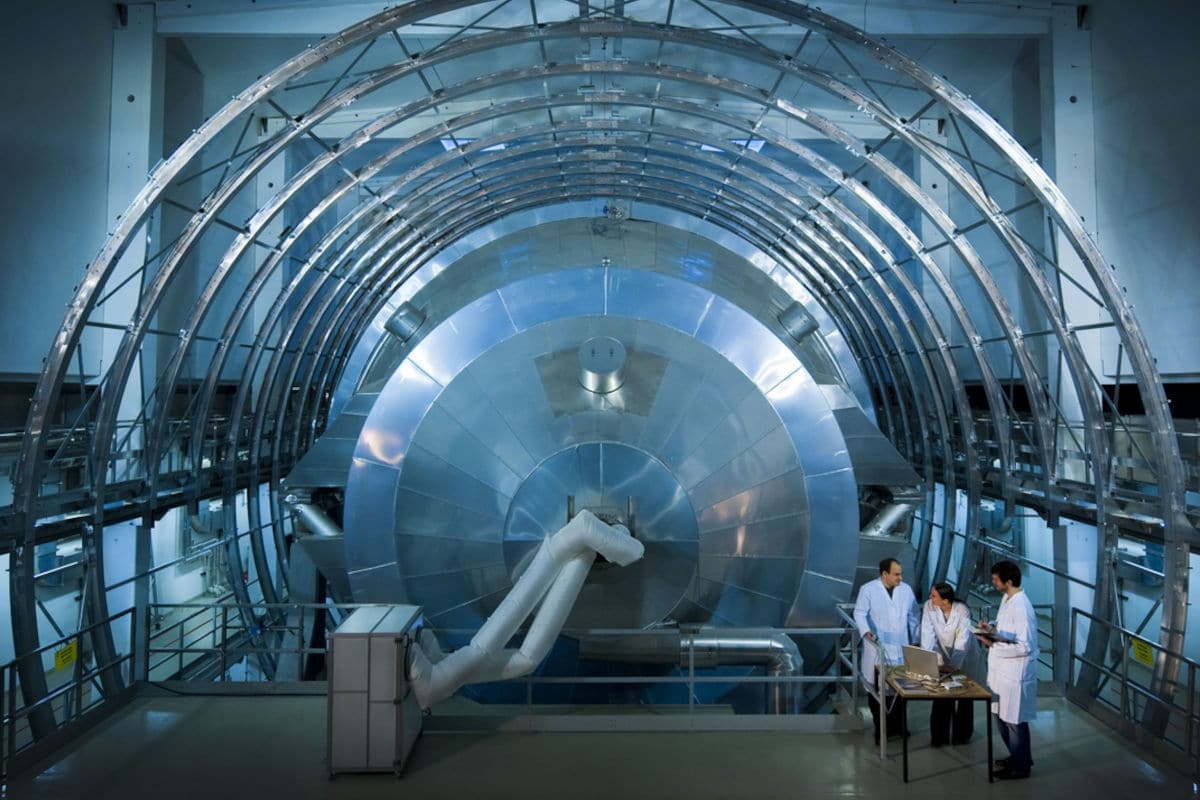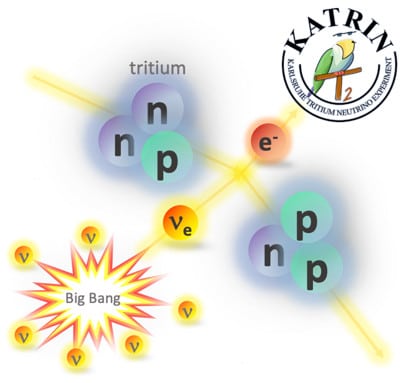
If you want to cash in on a Nobel Prize quickly, you’d better choose another subject. But the experiment KATRIN has just centered around the so-called relic neutrinos could be a little tighter.
Exactly one second after the Big Bang, they were released into our universe: the so-called relic neutrinos. Now, nearly 14 billion years later, they are still there. Every cubic centimeter of space should contain hundreds of these particles.
However, it has never been possible to prove its existence. The team behind the experiment KATRINA, in Karlsruhe, Germany, is now making a new contribution. But physicists probably still have a long way to go before they can really claim to have spotted these particles from the very young Universe.
depleted particles
Initially, our universe was a pleasant place: particles and radiation mined freely with each other. But after a few seconds, the neutrinos gave up. From then on they virtually ignored all other particles and went their separate ways.
“Currently, these relic neutrinos are the most abundant matter particles in the universe,” says physicist Thierry Lasserre, one of the KATRIN researchers. “On average, there are 336 per cubic centimeter.”
After 13.8 billion years of traveling through an expanding universe, these particles alone are exhausted. As in: they only carry a tiny bit of energy with them. “Measuring neutrinos is difficult anyway, but these neutrinos are completely difficult to detect because they have so little energy,” says particle physicist Aart Heijboer from Nikhef, not involved with KATRIN. “Whether we can ever detect them is therefore very questionable.”
brave attempt
That hasn’t stopped the team behind KATRIN from making a valiant effort. They make grateful use of the substance tritium. That is a form of hydrogen, but where the nucleus of a hydrogen consists of a single proton, a tritium nucleus consists of a proton and two neutrons.
Now tritium is radioactive: on average after 12.26 years a tritium nucleus changes into a helium nucleus, emitting an electron. But an incoming relic neutrino can also cause that process:

Tritium (top left) can change under the influence of a relic neutrino (bottom left) into helium (bottom right), emitting an electron (top right). Illustration: KATRIN/KIT
That should yield electrons with a very specific energy, which the detectors of KATRIN could measure.
Up to 100 billion times higher
The latter has been tried – but for the time being the KATRIN team cannot report a peak in the relevant energy. That should not be called a surprise. If there are indeed ‘only’ 336 neutrinos per cubic centimeter, that is far too few to produce a measurable signal.
But suppose that large amounts of relic neutrinos have accumulated around our galaxy, the Milky Way. That, in other words, the density of these neutrinos in our environment is extremely much higher than average. Then you might have seen something with KATRIN.
So that didn’t happen – so we now know that the relic neutrino density around the Milky Way is at most 100 billion times higher than the average neutrino density. And that’s news, because before the KATRIN results, that upper limit was a factor of a hundred higher.
‘Pretty hopeless’
The KATRIN experiment should run until 2024. With all the data that this yields, the upper limit for the local relic neutrino density is expected to be lowered by a factor of ten, the KATRIN team writes.
At least that’s one possibility. It is of course possible that there are just so many neutrinos around the Milky Way that KATRIN-to-and-2022 has not been able to measure them, but KATRIN-to-and-2024 will soon.
It will just be difficult to find a physicist who is willing to bet money on that. “Unless there are major surprises, the search for these neutrinos is fairly hopeless for the time being,” says Heijboer.
Source material:
†New Constraint on the Local Relic Neutrino Background Overdensity with the First KATRIN Data Runs” – Physical Review Letters
†A Step Closer to Detecting Ancient Neutrinos” – APS Physics
Image at the top of this article: KATRIN/KIT